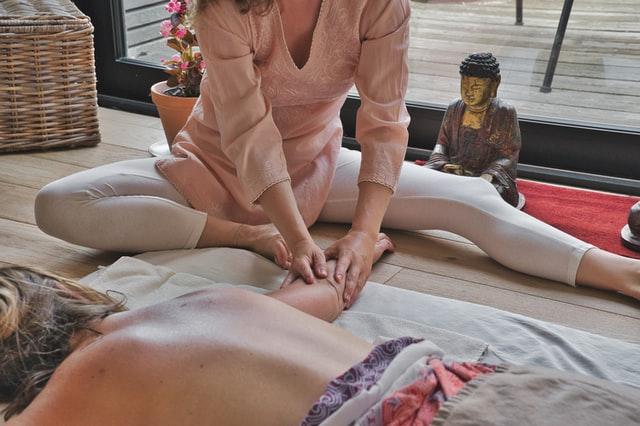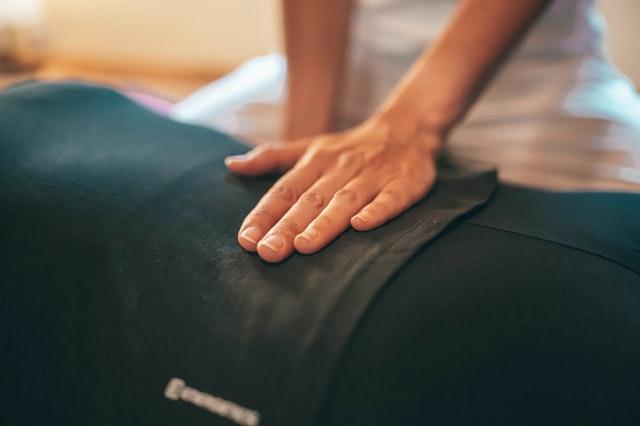Hip Physical Therapy
Annoying, unpleasant, and debilitating, hip pain is a common issue that can be caused by a variety of factors. Usually, the location of the pain can tell us a lot about its underlying causes.
Inside or groin pain means that there is a problem with the hip joint, while outside hip, upper thigh, or outer buttock pain is associated with muscle, tendon, and ligament issues.
The most common causes of hip pain are arthritis, fractures, bursitis (inflammation of liquid found between the bone and muscles), tendonitis (inflammation or irritation of the tendons), tendon or muscle strain, and so on.
Hip pain can further lead to the loss of range of motion, loss of strength, muscle activation decrease, and an inability to walk or run in a normal way.
Luckily, hip pain can be treated medically, using medication and physical therapy exercises. Physical therapy should always be carried out with a professional physical therapist, whose role is to examine the nature of the hip pain along with other relevant medical results and to design a set of exercises suitable for the particular patient.

Contact Us Physical Therapy
What Is Hip Physical Therapy?
Hip physical therapy, just like any other physical therapy is an exercise program designed to stretch and strengthen muscles and joints around the hip.
The exercises are gentle and include a range of movements like flexing, stretching, balance training, gait training, joint mobilization, or stabilization. The main goal of hip physical therapy is to restore strength and movement to your hip joint by promoting normal blood circulation.
The therapist will usually introduce you to a variety of exercises and teach you how to do them properly. Although you’ll stop seeing your therapist after some 4 to 6 weeks, that doesn’t mean that you should also stop exercising.
Especially among the older population, once introduced, physical therapy remains a life long practice.
How Does Hip Physical Therapy Help Patients?
Hip physical therapy exercises are geared towards restoring joint and tendon flexibility and elasticity. While in many cases of illness or injury, it remains impossible to restore their function to the fullest, more often than not, these exercises do help with living a normal pain-free life again.
These low-impact exercises help improve joint mobility and thus reduce symptoms of pain and discomfort caused by inner inflammatory processes.
Stretches, for example, help improve joint mobility by taking pressure off the muscles, nerves, or ligaments. They also allow your hip to regain its mobility, thus decreasing compensatory movements that might have been the secondary causes of hip pain.
Strengthening and flexing, on the other hand, provide support for your joints, thus decreasing pressure on your ligaments and nerves. Muscle strength and activation can improve your overall mobility and help get rid of pain in your hip or groin area.

Contact Us Physical Therapy
How Long Is Physical Therapy for Hips?
Hip physical therapy rarely lasts longer than 6 weeks – it’s usually done in a timeframe of 4 to 6 weeks. It’s estimated that patients are capable of learning the exercises and building a routine within 1/1,5 months.
As for the sessions, they usually last 30 to 60 minutes, depending on the levels of your pain, mobility, and types of exercises.
Conditions Hip Physical Therapy Can Help
Hip pain is usually caused by either external wounding (fracture) or by inflammatory processes within the tissue.
These include osteoarthritis, rheumatoid arthritis, iliotibial band friction syndrome, piriformis syndrome, sciatica, labrum tear, femoroacetabular impingement, trochanteric bursitis, tendonitis, tendons and muscle strains, core muscle injuries, fractures, traumas, torn meniscus, etc.

Contact Us Physical Therapy
Hip Physical Therapy for Pain
Hip physical therapy for pain mainly focuses on effective stretching of your hamstrings. These attach to the pelvis and play a role in bending your knees and extending your hips.=
Effective stretching of the hamstrings requires you to lie on your back with both knees out straight. After bending one knee and placing both your hands behind it, try to straighten it as much as you can. Remain in the position for a full minute and repeat three times on each side.
If you feel a pull behind your thigh, keep going as long as it’s not painful. If you feel immediate pain, pay a visit to your physiotherapist.
Hip Physical Therapy for Mobility
Hip physical therapy for mobility usually comprises of several stretching exercises. For example, you can lie on your back with both knees bent, and then cross one ankle over the opposite knee. Use your hand to move the knee in and out, thus rotating the hip in and out.
You can also sit down with your feet together and use your hands to press your knees closer to the ground. Pay attention to your back posture at all times and make sure to keep them straight.
Hip Physical Therapy for Recovery
Hip physical therapy for recovery, particularly surgical (hip replacement for example), can include a wide range of exercises, from the easiest ones, like ankle pumps (pushing your feet up and down while lying on your back) to walking, cycling, or extending your tendons.
Some of the simplest exercises involve ankle pumps, ankle rotations, or buttock contractions, as they’re all conducted while lying on your back.
More complex ones involve straight leg raises, standing knee raises, or standing hip extensions (moving your leg on the side and back).
As you restore mobility and flexibility in your hips, you may become ready to walk again, use the stairs with or without a crutch, or perhaps even jog.

